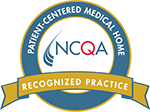Eye Exams: Not Just for Kids with Bad Vision
It is hard to imagine that the perfect little person you created can have anything wrong with them. To ensure their optimal health you take them to all of their well-child examinations with the pediatrician. You also take them to the dentist every six months for a cleaning and examination. You even start taking them to the dermatologist annually for skin cancer checks. But you don’t take them to the doctor for an eye exam because they have 20/20 vision.
If you are lucky enough to go to a pediatrician that has specialized vision testing equipment like the Spot Vision Screening, you know more about your kids’ eyes than most. Yet, you still may not have the full story.
The standard vision test checks vision at a distance binocularly (using two eyes) and monocularly (using one eye). The result of this vision screening can help determine if they need to have glasses. However, this is just a screening. It in no way replaces a comprehensive eye examination. Here is one mom’s recount of why comprehensive vision exams are important.
“When I was younger, I worked in ophthalmology and thought I had a good handle on my son, Brian’s vision. He was able to see 20/20 and there were no signs indicating that anything was wrong. Then, at 11 years of age he began complaining of not being able to see certain things clearly so I took him to the Optometrist’s office. Quickly into the exam I learned things were not all sunshine and rainbows. I learned that while Brian had good distance vision (20/25) and even good up close vision, he was completely suppressing the vision in one of his eyes. The optometrist suspected this began as an infant when his vision was developing. From a young age he simply learned to suppress or not use the visual information provided from one of his eyes. Brian’s condition could not have been diagnosed at a school or pediatric screening. He is now undergoing a series of treatments to train his brain to process the visual information he is getting from both eyes correctly. The process will not be speedy, but should be successful with diligence. ”
The American Optometric Association states that children should have their first eye exam beginning at six months of age. They should then have another at age three and age five or six or before entering school. Eye exams involve much more than reading an eye chart. With 25 percent of school-age children having vision problems, it is an essential examination that should begin early, when certain conditions are most easily treated.
According to All About Vision, during an eye exam, the doctor will perform a series of tests including:
- Near vision
- Distance vision
- Binocular coordination
- Eye movement skills
- Focusing skills
- Peripheral awareness
- Hand/eye coordination
If your child has not had a comprehensive eye exam, talk to their pediatrician for a recommendation sooner than later. Also, if your child had an eye exam, but is overdue for another, make it a priority. As children grow, their vision continues to change. What may have been normal vision at age three can turn into myopia (nearsightedness) at seven.
We are here to help. If you have a question or concern about your child’s vision, schedule an appointment with one of our pediatric providers today.







